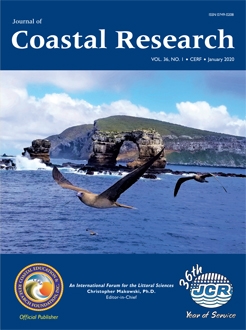Millán-Aguilar, O.; Nettel-Hernanz, A.; Hurtado-Oliva, M.Á.; Dodd, R.S.; Flores-Cárdenas, F., and Manzano-Sarabia, M., 2020. Landscape metrics and conservation status of five mangrove wetlands in the eastern Gulf of California margin. Journal of Coastal Research, 36(1), 94–102. Coconut Creek (Florida), ISSN 0749-0208.
Ecological significance and relevance of mangrove wetlands has been widely highlighted worldwide. Nevertheless, human-derived impacts and climate variability are increasing threats to these ecosystems in the last decades. Mangroves from Sinaloa (Mexico) integrate a large wetland corridor and provide several ecosystem services; however, diverse stressors could be increasing their vulnerability and associated biodiversity. The conservation status of five mangrove wetlands in this region was assessed through remote sensing techniques, landscape metrics, official databases and in situ records. In general, a decrease on mangrove cover was observed, excepting Estero de Urías and Ceuta, while aquaculture increased in all sites, with a greatest coverage in Santa María-La Reforma (increased 2057 ha in 18 years). The largest annual rate of change was observed in Huizache-Caimanero (–0.99%). Although conservation programs exist, there are signs of deterioration of mangrove wetlands according to this study.





